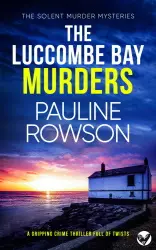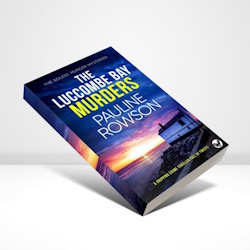
I've been very fortunate to spend some intriguing hours with the Fingerprint Bureau at Hampshire Police Support Headquarters at Netley studying how the fingerprints taken at the scene of crime and of people in police custody are identified, all in the cause of writing my crime novels, I hasten to add, and not as a suspect or criminal.
Over the years I've learnt a lot of fascinating forensic facts. Jane Ashton, Supervisory Fingerprint Examiner, has shown me around the modern single storey building at support HQ named Herschel House after the father of fingerprinting William James Herschel who was born in Slough on 9th January 1833.
Jane had several files on her desk of prints taken at crime scenes with the locations of where they had been lifted clearly written on the lightweight plastic squares. Some prints were quite clear, others rather smudgy, to me at least, although Jane with her vast experience and training quickly dismissed that, she could see through the grey smudges to clear prints. These had been lifted primarily from burglaries but I also saw some interesting photographs of prints lifted using chemicals taken from wrappings on a drugs hauls. The prints taken of those in custody were on paper and therefore were very clear.
Although the police have a computer system for fingerprints called IDENT1, fingerprints are still physically examined by humans, through an eye glass and careful study. The trained examiners know exactly what to look for and how skin reacts, ages and can be scarred. They can spot a scar and other smaller details that IDENT1 can't.
Fingerprints taken at the scene of the crime without a suspect in custody will be studied by the examiner, scanned and then run through IDENT1 to see if a match comes up. The match will be run for those first in the county of Hampshire and then widened to the outlying counties and if the officers at the crime scene have reason to believe the crime could have been committed by someone from outside the immediate area, and/or if the crime is a major one then the search will broaden to national. The image on the computer will be compared to that taken at the scene and the trained fingerprint examiners will be able to confirm if they have a match.
I thought with all the villains watching CSI and police drama programmes on television they'd all be wearing gloves and know exactly how to avoid leaving fingerprints but not so it seems, thankfully. Many crimes are committed in haste, those that are opportunistic, those by drug addicts desperate to get money for their next fix who never think rationally or intelligently, and never stop to wear gloves. And even in the serious and organised crimes I'm informed that villains will often remove their gloves. or a glove. for one reason or another (sometimes to go to the toilet!). It is very difficult to keep gloves on all the time, they will leave a tell-tale mark somewhere and the role of the scene-of-crime officers is to find that. The role of the fingerprint examiners are to identify it and if it can't be identified because the criminal is not on the database then it is held until one day that person commits another offence and it is matched.
It's a fascinating topic and I enjoyed my visit tremendously. My thanks to Jane Ashton and her team at Hampshire Police Fingerprint Bureau. Keep up the good work!
 Here is a case where fingerprints throw up an interesting twist in THE LUCCOMBE BAY MURDERS DI Andy Horton Solent Murder Mystery (15)
Here is a case where fingerprints throw up an interesting twist in THE LUCCOMBE BAY MURDERS DI Andy Horton Solent Murder Mystery (15)
A man is found dead inside a log cabin nestled in Luccombe Bay on the Isle of Wight. He has no ID on him and no one knows who he is. Except Detective Inspector Andy Horton . . .
The dead man’s fingerprints match those on a card DI Andy Horton Horton was handed months ago by a mysterious man.
Horton travels to the Isle of Wight to view the body. But he’s shocked to see it’s not the same man who handed him the card. How did this man’s prints get on the card? And who is he?
As Horton explores the area around the cabin, he causes a landslip and another corpse is revealed. Now he may have two murders on his hands.
As he follows the trail of the dead man, he uncovers some startling revelations into his own mother’s past and the truth behind her disappearance over thirty years ago.
Pauline Rowson lives on the South Coast of England and is the best selling author of many crime novels, published by Joffe Books. Her popular crime novels include the DI Andy Horton Solent Murder Mystery series, the Art Marvik mystery thrillers and the 1950s set Inspector Ryga mysteries. Subscribe to her newsletter for all the latest books news.